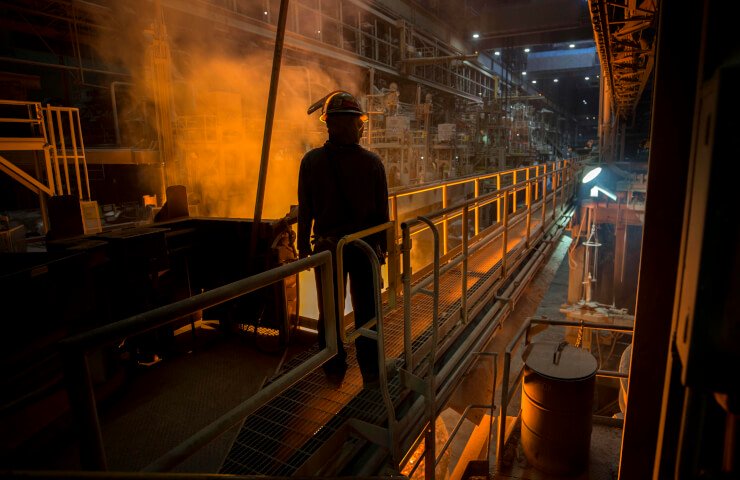Analysts say U.S. steel prices are unlikely to return to last year's highs over the next year due to incoming steel capacity and falling raw material prices, which could affect steel mill profitability.
"I don't think we'll see steel prices rise to levels we've seen in the recent past," said Wen Li, senior metals and mining analyst at CreditSights. “Data points to downside risk. You have potential to connect to the network and weaker demand.”
“There are more opportunities emerging in the United States and also in other countries,” said Terry Ryan, managing director of Carl Marks Advisors. “This is a natural progression in a market where the more capacity comes online, the more likely prices are to normalize.”
Andreas Bockenhäuser, equity analyst at UBS, agreed that supply growth could outpace demand, which in turn would lead to lower prices for hot rolled coil and then stabilize.
“The problem is that capacity is growing two to three times faster than demand is growing. If you are going to add new capacity, you will be competing for market share, and for this you will have to lower the price,” said Bockenhäuser.
US flats producers North Star BlueScope, Steel Dynamics Inc (SDI) and Nucor Gallatin have a combined production capacity of more than 9 million short tons, which are or should be commissioned before the end of this year. As the U.S. continues to transition to electric furnaces, some of the commissioning capacity could be seen as simply replacing blast furnaces that have been idle indefinitely, so it's unlikely to drive prices down, other analysts said.
The increase in steel production comes amid a series of plant shutdowns scheduled for this fall, which together could lead to a reduction in US steel production of about 600,000-800,000 tons.
However, planned shutdowns are unlikely to change market fundamentals, analysts say.
“The shutdowns will contribute to a seasonal recovery in demand that will improve from current levels in the coming months,” said Fastmarkets analyst Paolo Frediani. “The shutdowns will not be enough to fundamentally change the balance of supply and demand. Our analysis suggests that the price recovery expected in the near future will be modest.”
The shutdowns will support a seasonal recovery in demand that will improve from current levels in the coming months.
“Maintenance shutdowns are likely not enough to make up for weakness in demand, while steadily falling import prices could also offset lower domestic supply in the coming months. Thus, we do not think that maintenance stops are of great importance at the moment, in particular when the stocks in the service centers are still sufficient,” added Bockenhäuser.
Commodity prices decrease
The fall in the cost of raw materials may also contribute to the fall in prices for hot-rolled coils, analysts say.
The flat steel market is forecast to resume its downward trend next year due to factors such as scrap metal prices "holding well below recent peaks" and "competitive import prices as steel markets trend down around the world due to weaker demand and lower raw material costs,” Frediani added.
Bockenhäuser noted that falling commodity prices in China would increase downward pressure on steel prices in China, pushing U.S. steel prices back to mid-cycle levels.
“If you are bearish on iron ore and metallurgical coal prices – which we are – steel prices should fall with them, and this is what we are seeing in six, 12, 36 months. In this scenario, U.S. steel prices will return to mid-cycle levels, at least in the $30-$35/cwt range,” he said.
The Chinese hot-rolled steel market is under pressure due to a lack of market confidence and persistent weakness in end-user demand, as well as lower raw material prices.
Profitability questionable
Analysts say that as steel prices stabilize, record profits by major steel companies may not last long.
"You're seeing prices rebounding from these all-time highs, and as those prices continue to fall, you're going to see some of the profitability issues that major players have experienced over the past six quarters," Ryan said.
After many calls from major steel producers in July on Q2 earnings and losses, top managers acknowledged the fall in steel prices and




